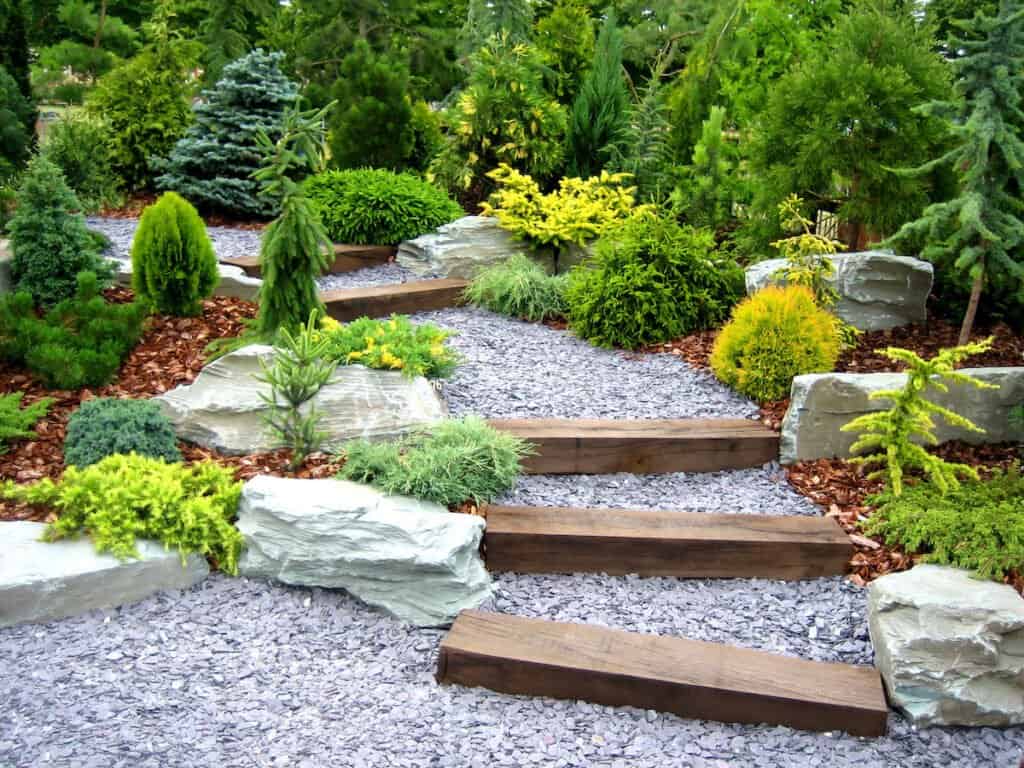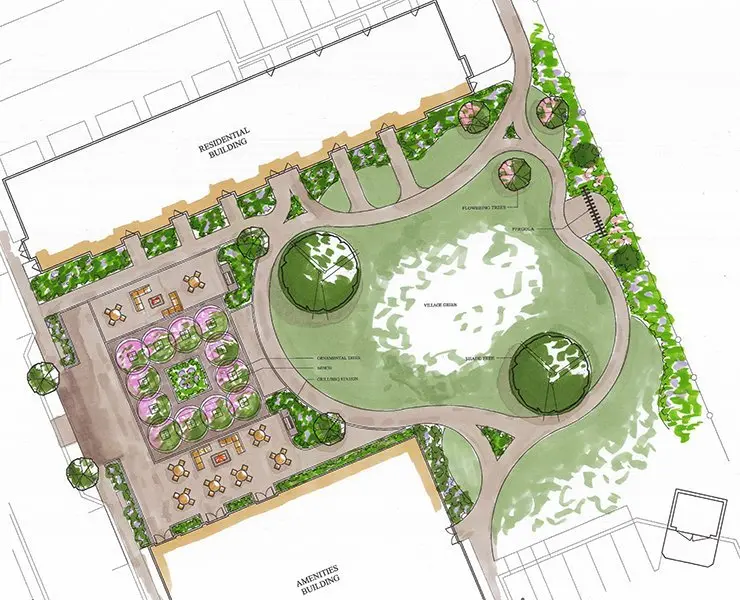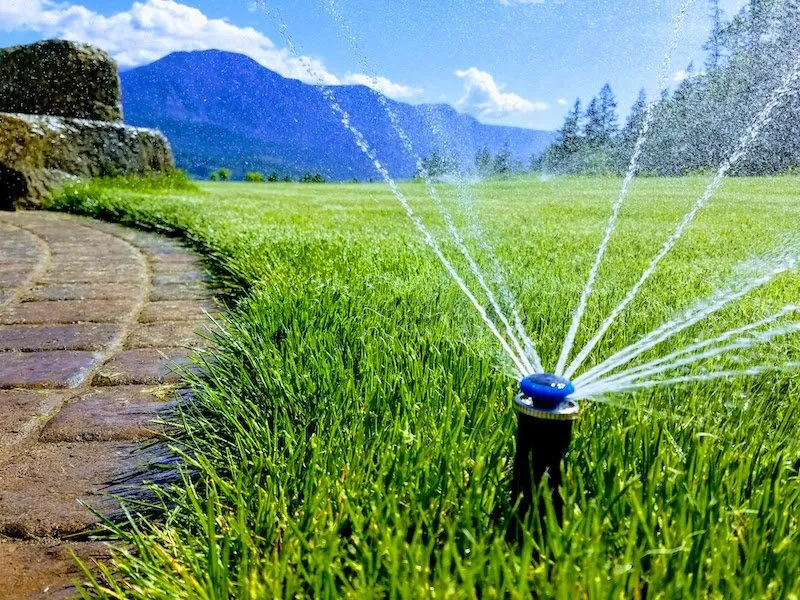Embarking on a major DIY landscaping renovation can be daunting. Transforming your outdoor space into a personal sanctuary or a stunning showpiece requires careful planning, creativity and hard work.
Whether you’re looking to enhance your backyard for family gatherings, create a serene garden retreat or increase your home’s value, these tips will guide you through the process.
Table Of Contents
DIY Landscaping Ideas On Budget

1. Plan and Design Your Space
Transforming your space begins with a well-thought-out plan and design. Start by assessing your goal — what do you want to achieve with the renovation?
Consider the primary purpose of the space. Are you looking to create a family-friendly backyard with play areas for children or an elegant setting for entertaining guests?

Take note of any existing features, such as trees, slopes and structures, that can influence your design. By understanding your priorities and the natural attributes of your space, you can create a cohesive plan that aligns with your vision.
Once you have a clear idea of your goals, it’s best to sketch your vision. Create a rough layout of your yard, marking current elements and the new features you wish to add. This visual representation will help you refine your design and ensure all components fit together.
Consider factors such as sunlight exposure, wind patterns and the flow of movement through the space.
You’ll also need to think about your area’s climate and soil conditions, as these will impact the type of plants and materials you choose. Incorporating these considerations into your design is a surefire way to ensure your project turns out exactly how you envisioned it.
2. Set a Realistic Budget
Setting a realistic budget is crucial for a successful DIY landscaping project. Start by researching the costs of all the materials, plants, equipment and tools you’ll need. Prices can vary widely depending on the quality and quantity of items you choose.
Remember to include costs for any necessary permits, professional consultations or unexpected expenses that might arise during the project. Creating a detailed list and gathering price estimates from various suppliers is a good idea to ensure you have an accurate picture of the total expenditure.
Once you have a comprehensive overview of your potential costs, prioritize your projects accordingly. Determine which elements are most important to you and allocate your budget. If funds are tight, consider phasing your project, focusing on the most critical areas first and completing the rest over time. This phased approach allows you to spread out expenses and adjust as needed without compromising your vision.
Backyard Renovation Cost
To determine the average budget required to renovate a landscaping, several factors need to be considered. These factors include the
- size of the area
- the extent of renovation needed
- materials to be used
- labor costs
- any additional features or designs.
On average, The average landscaping cost is $3,350 to $14,200, with a typical price range per square foot of $4.60 to $20.00.
For a more accurate estimate, it is recommended to consult with local landscaping professionals or contractors who can provide personalized quotes based on your specific needs and preferences.
Additionally, look for cost-saving opportunities such as:
- Using recycled materials
- Upcycling
- Searching for decorative elements on resale websites
- Opting for native plants that require less maintenance and are eco-friendly
- Tackling smaller tasks yourself
3. Gather the Right Tools and Materials
Ensure you have the basic tools, including:
- Shovels
- Rakes
- Pruning shears
- Wheelbarrow
- Gloves
- Hose
- Garden fork
- Buckets
Depending on the scope of your project, you may also require more specialized equipment, such as a level, tape measure and power tools such as a tiller or chainsaw. Invest in high-quality materials to ensure longevity and durability. This includes choosing resilient plants, sturdy edging materials and durable pavers or stones.
For a larger landscaping project, you may need to rent heavy-duty equipment like a mini excavator to handle tasks such as digging large holes, removing tree stumps or grading the land. It’s essential to operate such machinery properly to ensure safety.
Always thoroughly read the equipment manual to understand its functions and limitations. Wearing the necessary personal protective equipment, such as hard hats and eye protection, is crucial to minimize the risk of accidents. Additionally, be aware of specific operational guidelines, such as avoiding driving on slopes greater than 70% to prevent issues with engine lubrication that could damage the equipment.
4. Prepare the Site
Proper site preparation is crucial for a well-executed project. Begin by thoroughly clearing the area of any debris, including rocks, weeds, old plants and unwanted structures. This clean slate will make visualizing and executing your new design easier.
Depending on the size of your project, you may need to remove existing grass or topsoil, which you can do manually or with the help of rented equipment like a sod cutter or a mini excavator.
A fresh canvas will make it easier to install new features and prevent complications.
After clearing the area, it’s crucial to mark the boundaries and layout of your new landscape. Use stakes and string to outline beds, paths, patios and other key features. This will help you picture the final design and ensure everything is exactly as you’ve imagined.
Additionally, consider any necessary grading to improve drainage and prevent water pooling, which damages structures and plants. Adding a layer of topsoil or soil amendments can enhance the ground quality, providing a healthier environment for your new plants to thrive.
5. Incorporate Hardscaping Elements
Adding hardscaping elements is a fantastic way to incorporate structure and visual interest into your landscape. Hardscaping includes non-plant features like pathways, patios, retaining walls and water features.
For example, well-placed pathways made of gravel, stone or pavers can guide foot traffic and protect your plants, while a patio can provide a perfect area for outdoor dining and entertaining. Retaining walls can help manage soil erosion on sloped properties and create visually appealing terraced garden beds.
Adding a focal point, such as a fountain or a sculpture, can draw attention and create a serene atmosphere. When selecting hardscaping materials, choose durable and weather-resistant options that complement your home’s architecture and natural surroundings.
6. Install Irrigation Systems

An efficient irrigation system is key to maintaining a healthy and vibrant garden. Consider options such as drip irrigation or soaker hoses, which deliver water directly to the roots, reducing water waste and promoting healthier growth.
For larger areas, sprinkler systems can provide even coverage. To further enhance efficiency, use smart controllers that adjust watering schedules based on weather conditions and soil moisture levels. Properly designed and installed irrigation systems ensure your plants receive the right amount of water, saving you time and effort while conserving resources.
7. Add the Final Touches
Adding the final touches is what will truly bring your vision to life. Focus on details such as edging your garden beds with stone, metal or wood to define spaces and prevent soil mulch from spilling onto paths. Spread a fresh layer of mulch to retain moisture, suppress weeds and give your garden a neat appearance. Incorporate decorative elements like garden arches, bird feeders or planters to add personality and charm.
Finally, consider installing landscape lighting to highlight key features, improve safety and make your outdoor space usable in the evenings. These finishing touches enhance the beauty and functionality of your landscape, making it a welcoming and enjoyable environment.
Bring Your Ideas to Life
A DIY landscaping renovation can transform your outdoor area into a beautiful and functional space that enhances your home’s value and your quality of life. By planning carefully, choosing the right materials and adding some finishing touches, you can create the outdoor retreat you’ve always dreamed of.








